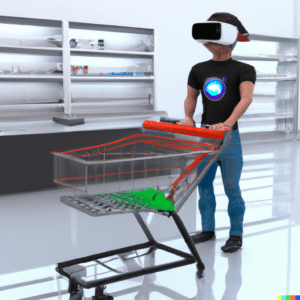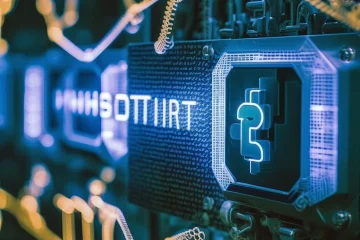E-commerce has come a long way since its inception in the early 1990s. The introduction of the internet has revolutionized the way we buy and sell products, and e-commerce has become a trillion-dollar industry. However, with the rise of Web3, e-commerce is set to undergo another massive transformation. In this blog, we will explore the future of e-commerce with Web3 and the impact it will have on the industry.

Understanding Web3
Web3 is the next generation of the internet, which is more decentralized, transparent, and secure than Web2. It is built on blockchain technology, which provides a distributed and trustless system for transactions. Web3 promises to create a new internet that is more democratized, where users have more control over their data and privacy.
The Impact of Web3 on E-commerce
Web3 will have a significant impact on e-commerce in several ways. Firstly, it will enable the creation of decentralized marketplaces that are free from centralized control. These marketplaces will allow buyers and sellers to transact without intermediaries, reducing transaction costs and increasing efficiency. Decentralized marketplaces will also provide more transparency and accountability, as all transactions will be recorded on the blockchain.
Secondly, Web3 will enable the creation of decentralized identities, which will give users more control over their personal data. These identities will be stored on the blockchain, and users will have complete control over who can access their data. Decentralized identities will enable e-commerce platforms to create more personalized experiences for users, as they will have access to more accurate data about their preferences and behavior.
Thirdly, Web3 will enable the creation of decentralized payment systems. These systems will be more efficient and secure than traditional payment systems, as they will use blockchain technology to enable direct peer-to-peer transactions. Decentralized payment systems will reduce transaction fees and increase the speed of transactions, making e-commerce more accessible to people in developing countries.
Challenges for Web3 E-commerce
Despite the potential benefits of Web3 e-commerce, there are several challenges that need to be addressed. Firstly, the technology is still in its early stages, and there is a lack of standardization and interoperability. This means that different Web3 platforms may not be compatible with each other, making it difficult for users to transact across platforms.
Secondly, there is a lack of regulatory clarity around Web3, which could create legal and compliance issues for e-commerce platforms. Web3 platforms need to work closely with regulators to ensure that they comply with existing laws and regulations.
Thirdly, Web3 e-commerce platforms will need to overcome the issue of user adoption. The technology is still relatively unknown to most people, and there is a need to educate users about the benefits of Web3 e-commerce.
Conclusion
In conclusion, Web3 is set to revolutionize the e-commerce industry by creating a more decentralized, transparent, and secure system. Decentralized marketplaces, identities, and payment systems will provide more efficiency, reduce transaction costs, and increase user control over personal data. However, there are challenges that need to be addressed, such as interoperability, regulatory compliance, and user adoption. It will be interesting to see how e-commerce platforms adapt to the new Web3 paradigm and how it will transform the industry in the coming years.


